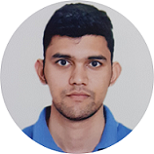PhD
Description of research: I am working on first principle electronic structure calculation of thermoelectric materials.
Curriculum: I am a first year PhD student at Department of Civil, Environmental and Mechanical Engineering, University of Trento. I obtained my Bachelor of Science degree (Physics) from University of Delhi, India in 2016. After graduation I received my Master of Science (Physics) degree from Central University of Haryana, India in 2018. My master's thesis was on "Glass preparation and statistical analysis of plastic event in a steady state: A molecular dynamics simulation".
Dr. Binayak Mukherjee, May 2022
Disorder at the nanoscale: A computational study
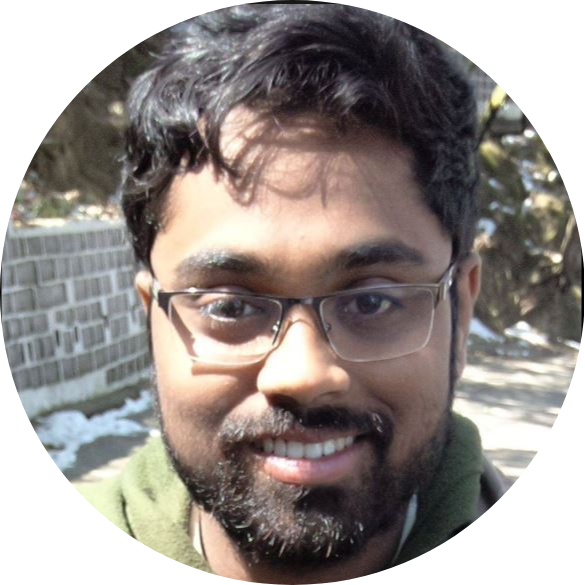
Binayak Mukherjee started his PhD at the University of Trento in December 2018 under the supervision of Prof. Paolo Scardi and the co-supervision of Prof. Stefano Siboni, having previously spent a short period from March to June 2018 as a visiting student in the department. He defended his thesis, titled "Disorder at the Nanoscale: A computational study" in May 2022. As suggested by the title, the work consisted of a study of physical/structural and chemical/compositional disorder in nanostructured materials, primarily for sustainable energy applications, using density functional theory and molecular dynamics in conjunction with the modeling of experimental results. This includes surface disorder due to physisorption and chemisorption on Palladium nanoparticles for nanocatalysis, bulk disorder in silver oxide used in batteries and biomedicine, as well as compositional disorder in the structurally complex quaternary I-II-IV-VI chalcogenides for thermoelectric applications. Using the atomic mean square displacement as a reliable bridge between the real samples and atomistic models, the computational studies revealed various modifications in the mechanical, electronic and thermal properties of the materials as a consequence of disorder - notably, surface softening in the Pd nanoparticles, bulk anisotropy in silver oxide, and improved electron and phonon transport in the complex chalcogenides. A byproduct of this last study led to the prediction of a topological Anderson insulator phase in Cu2ZnSnS4 with full cation disorder, the first such prediction in a real material system.
Starting from June 2022, Binayak is a postdoc at the Luxembourg Institute of Science and Technology with Prof. Jorge Iniguez, working on structure-property relations and ferroelectricity in nanostructured hafnium oxide, from a combined first-principles and Landau theory approach.
Email: sverbinayak@gmail.com; binayak.mukherjee@list.lu; binayak.mukherjee@unitn.it
Google scholar: https://scholar.google.it/citations?user=8X1OuWwAAAAJ&hl=en
Researchgate: https://www.researchgate.net/profile/Binayak-Mukherjee
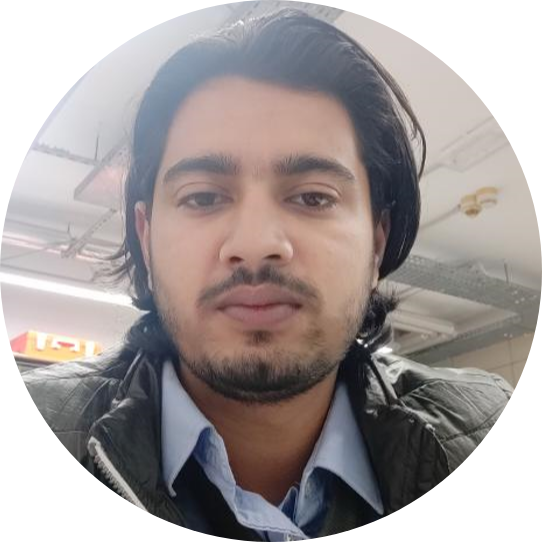
Dr. Ketan Lohani, May 2022
Development of Cu2SnS3 based thermoelectric materials and devices
PhD project: Advanced Energy Materials
Description of research: I am working on structural, spectroscopic, and thermal properties of thermoelectric nanomaterials. I also study phononic and electronic transport properties. My recent research works are focused on Copper Tin Sulfide (Cu2SnS3, CTS) material and its possible applications as a high-performing thermoelectric material.
Curriculum: I hold a bachelor's and a master’s degree in Physics. I did my master’s thesis work (Jan-July 2018) from Hard X-ray Applications Laboratory (HXAL), Indus-II synchrotron source, Raja Ramanna Centre for Advanced Technology (RRCAT), Indore, India. I studied structural, spectroscopic, and magnetic properties of Nickel-Ferrite nanoparticles using various beam-lines of Indus-II synchrotron source.
Links
Researchgate: https://www.researchgate.net/profile/Ketan_Lohani2
Google Scholar: https://scholar.google.com/citations?user=O6BUJLoAAAAJ&hl=en
Linkedin: https://www.linkedin.com/in/ketan-lohani-8a8642132/
Unitn: https://webapps.unitn.it/du/it/Persona/PER0211496/Curriculum
Dr. Eleonora Isotta, September 2021
Structural Defects in Nanotechnology: Production - Characterisation - Applications
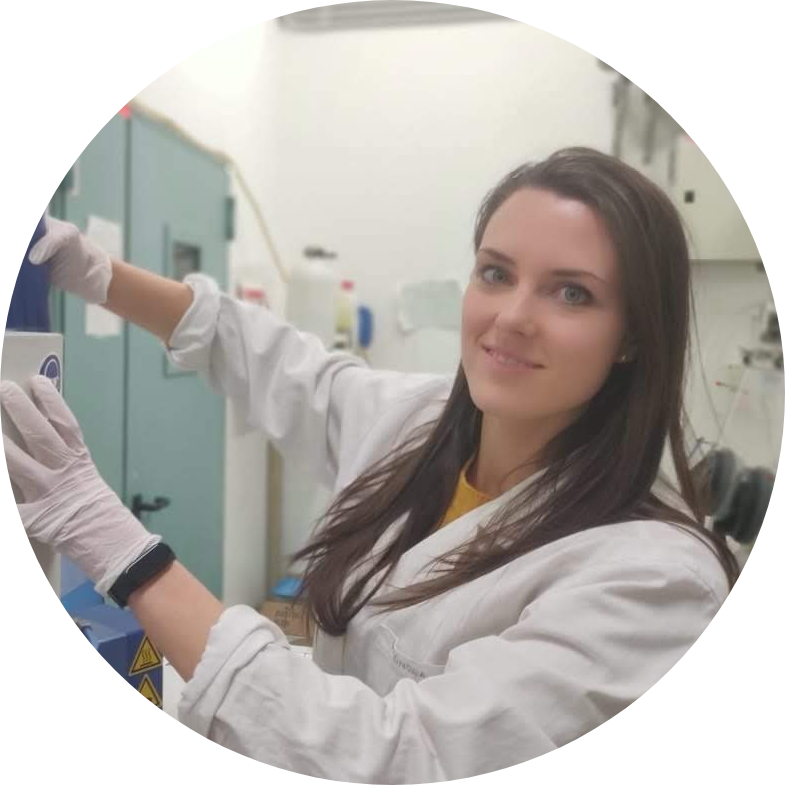
In November 2017, Eleonora Isotta began her doctoral studies in Materials Science at the Energy and Materials Laboratory, University of Trento, under the supervision of Prof. Scardi and in collaboration with Prof. Pugno. The thesis was on
"Nanostructured thermoelectric kesterite Cu2ZnSnS4". The PhD project focused on the effect of polymorphism, structural disorder and phase transitions on thermoelectric transport properties. Complex chalcogenides allow disorder- and defect- engineering to achieve specific properties. The synthesis of disordered polymorphs allowed to observe exciting thermoelectric effects: from enhanced band convergence, to rattling and anharmonicity for a suppressed thermal conduction, to topological properties. Thermoelectric measurements have also been investigated as a method to study phase transitions. In the years 2019-2020 she was teaching assistant for the course of Materials Science, held by Prof. Scardi at the bachelor's degree in Environmental Engineering. Since 2018 she has been a member of the Italian Thermoelectric Society, which has awarded her the best Junior article on thermoelectricity for the year 2019, with the paper "Effect of the order-disorder transition on the Seebeck coefficient of nanostructured thermoelectric Cu2ZnSnS4. Nanomaterials".
In November 2021 she will begin a PostDoc at the Michigan State University (East Lansing, Michigan, USA) with Prof. Alexandra Zevalkink and in collaboration with Northwestern University (Evanston, Illinois, USA) with Prof. Jeffrey Snyder. The project will target a thorough understanding of the effect of grain boundaries on thermoelectric transport properties.
- E-mail: eleonora.isotta@unitn.it
- Phone: +39 3463964156
- Google scholar : https://scholar.google.com/citations?user=Wo1puQgAAAAJ&hl=it
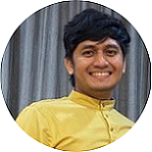
Dr. Ubaidah Syafiq bin Mustaffa, September 2021
Alternative uses of CZTS thin films for energy harvesting. Thin film devices: Synthesis – Fabrication – Characterization
Ubaidah Syafiq started his doctoral studies in November 2017 at the Energy and Materials Laboratory, Department of Civil, Environmental, and Mechanical Engineering, University of Trento, under the supervision of Prof. Paolo Scardi and Dr. Narges Ataollahi. His studies were summed up in his thesis entitled “Alternative uses of CZTS thin films for energy harvesting”. In short, his studies focused on quaternary chalcogenide Cu2ZnSnS4 (CZTS), that is commonly studied as an absorber material for second-generation thin film solar cell, to be used alternatively in energy harvesting generation technology; as a transport layer in third-generation perovskite solar cell (PSC) and a p-type thermoelectric material in thin film thermoelectric generator (TEG).
In his studies, CZTS thin film was successfully fabricated using a versatile approach involving hot-injection synthesis of CZTS nanoparticles ink followed by spin coating and thermal treatment. Results obtained revealed the possibility to fine control CZTS thin film fabrication based on ink concentration and spin. Besides that, thermal treatment temperature was found to affect the film’s overall properties, where an increase in thermal treatment temperature improved the degree of crystallinity and electrical properties. Furthermore, CZTS was found to be a good candidate to replace the commonly used organic hole transport layer in perovskite solar cells, with potentials in improving performance and stability. In addition, CZTS also possessed good transport properties to be a potential p-type material in a thermoelectric generator, with the preliminary performance of fabricated CZTS/AZO thermoelectric generator showing a maximum power output of ~350 nW at ~170 K ΔT.
He graduated his doctoral studies in September 2021 and currently working as a research fellow at the Solar Energy Research Institute, the National University of Malaysia, focusing on new generation solar cell technologies and materials of interest in sustainable and low-cost energy harvesting.
Email: muhammad.mustaffa@unitn.it/ubaidahsyafiq@ukm.edu.my
Phone: +60172804255
Google Scholar: https://scholar.google.com/citations?user=DQetbW4AAAAJ&hl=en
Dr. Alberto Flor, April 2019
Atomic modelling of disorder in metal nanocrystals
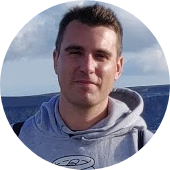
Alberto worked on vibrational properties of metal nanoparticles, investigating via Molecular Dynamics the influence of the surface for different particle shapes.
Currently Alberto works at the R&D Department of SWS Engineering, a company in Trento specialized in Underground Tunneling, where he employs many tools developed during the PhD.
Some of the projects he is working:
- writing a Python software to predict excavation performance of Tunnel Boring Machines (TBM's) in rock.
- simulation the cutter wear on rocks, via Descrete Elements Method (DEM, which is actually very similar to Molecular Dynamics) using the software YADE.
e-mail: albert.flor.mail@gmail.com

Dr. Camilo Perez Demydenko, February 2019
Static and dynamic disorder in nanocrystalline materials
During my PhD I worked on the Whole Powder Pattern Modelling (WPPM) approach. I formalized the concept of the Projected Length Variation (PLV) and its role in the WPPM theory. I deduced the Transformation laws of the PLV between different atomic configurations in a general distortion problem as well as implemented core WPPM equations in TOPAS (Rietveld analysis software) through specific macros. I developed a simple Surface Relaxation model for the WPPM approach, which is the first WPPM model implementing the imaginary component of peak profiles. I also worked on the Thermal Diffuse Scattering (TDS) in nanoparticles. Specifically I made analytic corrections to a TDS model developed by my group in previous years, and made an OpenMP program to model TDS powder profiles from Molecular Dynamics simulations. The later was done using the HEALPix method for homogeneously spanning the surface of sphere in reciprocal space, which allowed a more accurate computation of the powder TDS and Bragg profiles.
Dr. Marica Broseghini, December 2017
Modelling of high-energy grinding processes
Dr. Luca Rebuffi, April 2015
Advanced characterization of nanocrystalline materials by synchrotron radiation X-ray diffraction
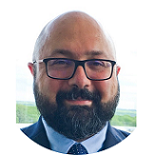
Physicist of the Optics Group in the X-ray Science Division at the Advanced Photon Source since 2018. More than 20 years of work experience in synchrotron radiation facilities and in private companies in the automotive and computer science sectors. Research interests include mainly design of X-ray optics for synchrotron radiation and development of software for optical simulations, but also X-ray powder diffraction methods, applications and development of software for data analysis, in particular for nanocrystalline materials. Current work focusses on the development of the software for optical simulation OASYS (https://www.aps.anl.gov/Science/Scientific-Software/OASYS) and the optical design of APS-U, the future upgraded Advanced Photon Source (https://www.aps.anl.gov/APS-Upgrade).
Dr. Claudia Malerba, June 2014
Cu2ZnSnS4 thin films and solar cells: material and device characterization
Dr. Luca Gelisio, November 2014
Structure and properties of nanostructured materials from atomistic modeling and advanced diffraction methods
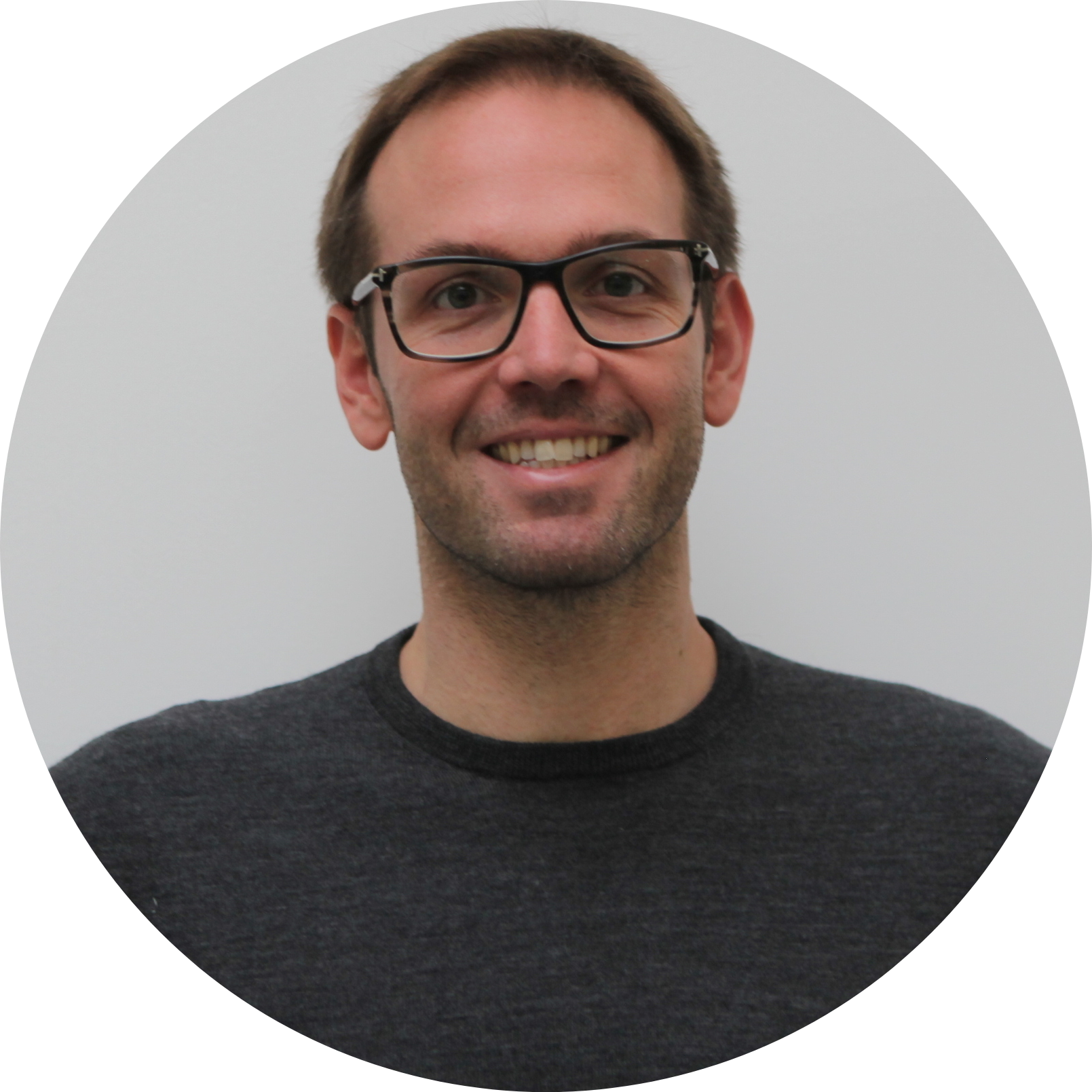
During his PhD Luca explored the applicability of the Debye scattering equation to nanostructured objects.
Atomistic simulations were used to create realistic models, used to develop methods to interpret peculiar surface relaxation and atomic vibrations of metal nanoparticles.
A modeling engine based on the Debye scattering equation was also developed.
Luca continued in Prof. Scardi's Group till 2017, when he moved to Prof. Vartanyants' Coherent X-Ray Scattering and Imaging Group at the Deutsches Elektronen-Synchrotron DESY.
Here he worked on in-situ/operando Bragg coherent diffractive imaging, correlation-based techniques like ghost imaging, and various methods for free-electron laser experiments.
In 2019, Luca was hired by Prof. Chapman to lead the Scientific Computing group at the DESY Center for Free-Electron Laser Science.
He is interested in computing, especially in the development and improvement of data analysis pipelines.
He keeps developing X-ray scattering methods, and likes to investigate material science problems, and especially in-situ/operando structural modifications.
Luca recently received "DESY strategy funds" for the development of an automated X-ray crystallography compound screening pipeline.
He is co-leader of the LEAPS-INNOV WP7 on data reduction and compression, co-chair of the Emerging Applications Domains, within the Platform for Advanced Scientific Computing (PASC) Conference and referee of various journals.
Google Scholar: https://bit.ly/2QkO1O5
Dr. Melanie Müller, November 2013
Advances in the modelling of in-situ powder diffraction data
Dr. Mahmoud Abdellatief, April 2013
Structural Defects in Nanotechnology: Production - Characterisation - Applications
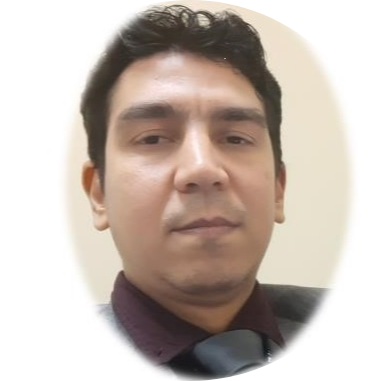
Mahmoud has granted his PhD fellowship as collaboration between Trento University and Elettra synchrotron therefore he stayed one year, 2010, in Trento then he moved to ELETTRA synchrotron, 2011-2013, where he stayed two years more until he finished his PhD degree in April 2013. Directly after finishing his PhD, he started a Post Doc position in Elettra at MCX beamline for two years, 2013-2015 continuing his main research interest in uses of synchrotron radiation techniques for nano materials’ structural investigations.
He is then moved to SESAME synchrotron in Jordan to start a new Materials Science (MS) beamline installation project dedicated for X-ray powder diffraction applications. He is currently the principal beamline scientist for MS beamline; as over about 4 years of work, he collaborated with the SESAME technical team to complete the MS beamline, which successfully received its first monochromatic X ray beam to MS experimental station in 23rd December 2019.
- E-mail: mahmoud.abdellatief@sesame.org.jo
- Phone: +962 5 3511348 ext 275
- Google scholar : https://scholar.google.co.uk/citations?user=iVz0xtkAAAAJ&hl=en
Dr. Alberto Leonardi, November 2012
Molecular dynamics and X-ray powder diffraction simulations
Dr. Kenneth R. Beyerlein, June 2011
Simulation and modeling of the powder diffraction pattern from nanoparticles: studying the effects of faulting in small crystallites

Ken received a dual-PhD from the University of Trento and Georgia Institute of Technology, where he was co-advised by Prof. Robert Snyder and Prof. Mo Li. His thesis sought to bring together atomistic molecular dynamics simulations and powder diffraction to study the structure of metal nanoparticle catalysts.
Interest in ultrafast X-ray diffraction led him to the Center for Free-Electron Laser Science in Hamburg, Germany for his postdoc time. First, he worked with Prof. Henry Chapman on serial femtosecond protein crystallography from 2012-2017. Then, he studied light-induced phase transformations with Prof. Andrea Cavalleri from 2017-2020.
Currently, Ken is Assistant Professor in the Energy, Materials and Telecommunications Center of the Institut National de la Recherche Scientifique based in Montreal, Canada. There he investigates phase transformation processes in a range of industrial and energy-relevant materials using cutting-edge ultrafast optical and electron microscopy techniques.
Google Scholar: https://goo.gl/nFeBg5
Dr. Matteo Ortolani, November 2011
Elastic properties of textured nanocrystalline thin films
Matteo began working for Tenaris Dalmine (Italy), a major company in the seamless pipe manufacturing business, in 2011. He was hired as Researched in the R&D Metallurgy department, where he assumed the responsibility for laboratory characterization and industrial development of innovative steel solutions, ensuring a solid connection between research and industrial applications. His main focus has been on the metallurgy of steels for elevated temperature applications (creep-resistant); high strength steels for automotive applications; metallurgical challenges in welding.
Thanks to this experience, Matteo took up an international assignment in Tenaris Silcotub (Romania) from 2017 to 2019. Here, he first worked as Product Engineer, closely following industrial deployment of new products and solutions. He then assumed the role of Manager for Product Metallurgy within the Quality department, focusing on industrial problem-solving and process optimization.
After returning to Tenaris Dalmine in early 2020, Matteo began working as Product Development Manager.
Google scholar: https://scholar.google.it/citations?user=qLKO_nMAAAAJ
Dr. David Dodoo Arhin, April 2010
Nanostructured copper oxides: production and applications
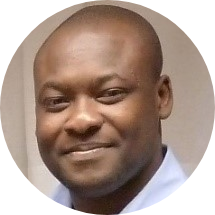
David Dodoo-Arhin is currently an Associate Professor at the Department of Materials Science and Engineering, University of Ghana. He obtained his PhD degree in Materials Engineering from the Department of Materials Engineering and Industrial Technologies, University of Trento-Italy in 2010 on the topic Nanostructured copper oxides: production and applications with particular focus on Energy and Environmental applications. His research areas include Materials for energy generation, conversion and storage, Carbon materials, nanotechnology and engineering ceramics.He was appointed a lecturer in 2011, Senior Lecturer (2014), Associate Professor (2018), the Head of the Department of Materials Science and Engineering, from August 2014 to July 2016 and Ag. Director of the Institute of Applied Science and Technology (IAST) from August 2016 to December 2016. In 2011, he undertook a postdoctoral research fellowship in Graphene for Photovoltaic applications at the Department of Physics at the University of Pretoria, South Africa. In 2013, he undertook a Postdoctoral Fellowship to conduct research on Graphene based dye sensitized solar cells with the Nanomaterials and Spectroscopy group (Cambridge Graphene Centre) at the University of Cambridge- UK through the Cambridge Africa Partnership for Research Excellence (CAPREx) programme. He has been a visiting academic at the University of Strathclyde (UK), University of Cambridge (UK), Università de Poitiers (France) and the RAPSODEE centre- Ecole des Mines de Albi-Carmaux (France) working on plastic waste processing to fuels. He was the host coordinator of the 2019 joint Pan African Conference on Crystallography (PCCr2) and African Light Source conference. He is a fellow of the Africa Science Leadership programme and the InterAcademy Partnership on Science Advice for policy.
- Department of Materials Science and Engineering, School of Engineering Sciences, University of Ghana. P.O.Box Lg 77, Legon-Accra, Ghana-West
- Email:ddodoo-arhin@ug.edu.gh; ddarhin@yahoo.com
- Tel: +233-243-423837; +233-277-115450
- Google Scholar: https://scholar.google.com/citations?user=L7KmQ14AAAAJ&hl=en
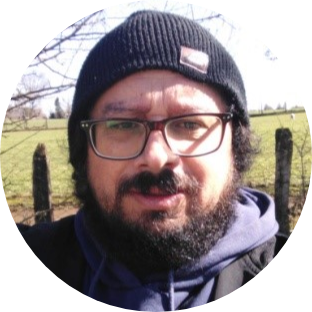
Dr. Hector Pesenti, March 2008
Re-engineering of natural materials for biomedical applications
Following my doctoral studies at the University of Trento-Italy, I have undoubtedly continued in the academy transmitting my experience in the academic training of undergraduates and postgraduate students, giving the chairs of materials science and engineering, Thermodynamics, and Materials Characterization, respectively. Currently, I have reached the hierarchy of associate professor at the Catholic University of Temuco - Chile, naturally belonging to the engineering faculty.
Continuing with the passion of my doctoral beginnings, my research area has focused on natural materials and the transcription of X-ray diffraction patterns to know and drive, together with other advanced characterization techniques, valuable properties for modern technologies. Principally, I have been working on wood and its bio-products for 8 years, together with other research workers we have made up a transdisciplinary Austral network of timber studies, which besides, researchers from private companies are enthusiastically joining. This undoubtedly arises from the specific need to precisely identify the genetic patterns of the considerable biological diversity of the forests of Southern Chile, for effective conservation and ecological sustainability. We have worked on the transformation and reduction of cellulose fiber from exotic species and residues of conservation plans for native orders. Currently, we are adequately expanding a specific area that we have designated "Woodlurgy", to develop the maximum efficiency of these engineering materials. On the other hand, in the international context, we have a successful collaboration in this specific area with distinguished researchers from Argentina, Brazil, Spain, Germany, and Mexico.
Dr. Héctor Pesenti
Head of the Applied Crystallography Laboratory
Faculty of Engineering
Edificio Cincuentenario, of.430
CAMPUS SAN JUAN PABLO II
Catholic University of Temuco
Rudecindo Ortega 02950
4780039 Temuco, Chile
Phone: +56 45 2 685064
hpesenti@uct.cl
Dr. Mirco D’Incau, April 2008
High-energy milling in nanomaterial technologies: process modelling and optimization
Dr. Jorge Martinez-Garcia, March 2008
On the X-ray contrast factor of straight-line dislocations
Dr. Cristy Leonor Azanza Ricardo, March 2008
Residual stress gradients, inhomogeneity and texture effects in metallic materials
Dr. Matteo Leoni, 1999
Residual stress gradients in polycrystalline coatings

